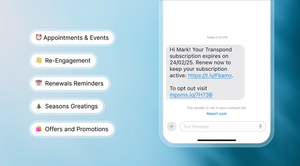Sometimes, the first step feels the hardest. We've all been there.
That’s why we put together this checklist – to make starting and growing your small business easier. With clear steps to guide you, you'll stay organized and avoid headaches.
We've also included a special mini-checklist to help you prepare for those busy periods when demand spikes!
How to set up and grow your small business
Step 1: Create a business plan
Before you do anything else, start with a business plan.
It’s the foundation of everything you’ll do for your organization. from securing your business name to planning for growth.
A strong business plan typically includes market analysis, financial projections, and an understanding of your target customers. It helps you map out how you’ll deal with customers and handle critical areas like business ownership, licenses and permits, and even taxes.
Your business plan should clearly define:
- your business goals
- the products or services you’ll offer
- the strategies for achieving growth
- your target market and customer demographics
- your unique value proposition
- operational plans, including key processes and suppliers
- marketing and sales strategies
- your financial projections and funding needs
- key performance indicators (KPIs) to track success.
New businesses need to have a plan that adapts as the business evolves.
Are you looking for some detailed guidance? Check out your ultimate small business plan template. If you want to start a company but need a business idea, we also have a unique article.
Step 2: Choose your business structure
Your business structure impacts your business, from taxes to everyday decisions. A sole proprietorship is the easiest to set up and manage – ideal for someone just starting a business. However, it doesn’t protect personal assets since you and the company are considered the same legal entity. This means you’re personally responsible for any debts or liabilities.

Limited liability companies (LLCs) are popular for small businesses because they create a separate legal entity. This model protects your assets if the business goes wrong. A limited liability company can also offer flexibility in how you pay taxes and manage ownership, making it an excellent option for those seeking a more secure structure.
While there are other structures like partnerships or corporations, most small businesses opt for sole proprietorships or LLCs due to their simplicity and flexibility. The right legal structure keeps your business compliant with the small business administration’s regulations and prepares you for any legal obligations.
Step 3: Register your business and obtain the necessary licenses
Once you’ve chosen your business structure, the next step is to register it with the appropriate authorities. This process makes your firm legally recognized and compliant with local regulations. Most companies must apply for business licenses and a sales tax permit.
Depending on your industry, you may also need special or additional licenses – for example, food services or home-based organizations may require extra permits.
Registering your business correctly helps you avoid penalties and sets everything up so you can start immediately.
Step 4: Set up a business bank account
You shouldn't run your company using your personal bank account. Setting up a business bank account lets you keep your finances organized and separate from personal funds. A company bank account helps manage cash flow, track expenses, and protect your assets from business liabilities.

Open your business account as soon as you register the business. It sets the foundation for all financial activities. Choose a bank that offers business-friendly features, like low fees or accounting integrations, to make managing your finances easier as you grow.
Step 5: Configure payment processing
Set up easy payment options and accept credit card payments. Offering multiple payment methods will help make transactions seamless, whether your business operates online or offline. Below, you will find a few ideas for various business types:
- E-commerce: Use online payment gateways like PayPal, Stripe and digital wallets like Apple Pay and Google Pay
- Small offline business: Set up point-of-sale (POS) systems to accept credit card payments, cash, and mobile payment options like Google Pay or contactless cards
- Small online business: Opt for platforms like Stripe or Square to handle credit card payments, bank transfers, and Buy Now, Pay Later services (e.g., Klarna)
- Service-based business: Use invoicing tools that support payments through credit cards, ACH transfers, or apps like Venmo and Zelle for easy client transactions
- Subscription-based business: Implement recurring billing systems that process credit cards, direct debits, or automated bank payments.
Step 6: Take care of accounting and financial management
Using accounting software is a must for keeping your business finances in order. It tracks expenses and revenue and helps you stay prepared when it’s time to pay taxes. You can automate your financial reports and keep everything organized, making filing federal and business taxes less stressful.
Set reminders in your software for key tax deadlines and due dates. On top of that, you should also regularly review your financials to spot opportunities for cost-cutting or investment.
There are many tools to help you out with accounting. You can use some small business balance sheet templates or learn more about small business bookkeeping.
Step 7: Check legal and tax requirements
Meeting your legal requirements is crucial to avoid unnecessary fines and penalties. Your business must comply with federal and state government regulations, which means handling tax filings and staying on top of financial obligations.
You’ll need to file your business tax returns regularly. For example, an LLC with employees may need to file federal payroll taxes, while a sole proprietor will typically handle self-employment taxes. In states with a sales tax, e-commerce businesses must file state sales tax returns. Research specific tax laws, such as income tax requirements for businesses operating in multiple locations.
Step 8: Get business insurance
Don’t wait until it’s too late – get business insurance as soon as possible. It protects you from major risks like property damage or lawsuits. Unemployment insurance and workers' compensation policies are essential if you have employees.
Review your operations and industry to identify coverage gaps. Consider bundling policies for better rates and ask your insurance provider for advice on protecting your business. Solid insurance will help you manage risks and focus on growth with peace of mind.
Step 9: Hire employees and comply with employment laws
As your business grows, you must decide whether to hire employees or remain a sole entrepreneur. It’s completely fine to run your business solo. If your tasks start piling up or expertise is needed in areas beyond your skill set, it might be time to bring on help. Whether hiring one person or building an entire team, you must follow legal guidelines to protect your business and employees.

First, you'll need an employer identification number (EIN) to file taxes and handle payroll. You’ll also be responsible for providing unemployment insurance and complying with federal and state employment laws. When you pay employees, ensure you track wages and withhold taxes correctly.
A good structure to consider is hiring part-time or contract workers initially. This lets you bring in specific skills without long-term commitments. Moving to full-time employees could be the next step once your business has consistent revenue and tasks that require ongoing attention.
Step 10: Optimize business operations
To grow your business, you must learn how to manage cash flow effectively.
Cash flow can make or break your business. For example, healthy cash flow allows you to cover startup costs and reinvest in growth, while poor cash flow could lead to missed opportunities or even bankruptcy. To improve, regularly monitor your inflows and outflows – business operations depend on this balance.
For practical guidance, check out our advice on cash flow management, learn how to stick to a small business budget, and access balance sheet templates for better accounting.
Along with careful management, you’ll need good tools to get started. Capsule CRM can be a great choice to help manage customer relationships and automate repetitive tasks. And since it offers a completely free CRM, it's an even better option for businesses looking to facilitate operations without adding extra costs!
Step 11: Establish a marketing strategy
Start with a clear marketing strategy that focuses on reaching your target audience. Identify your potential customers and develop a plan that resonates with their needs and preferences. A good marketing strategy often starts with setting up your social media accounts and creating consistent, engaging content that builds a connection with your audience.

Prioritize the platforms that your audience uses most. Then, track engagement and refine your approach as needed.
Need some help with the strategy? Check our guide to creating a marketing strategy and explore these marketing plan templates to help you get started!
Step 12: Keep an eye on inventory management
Inventory management won’t apply to every small business, especially if you provide services rather than physical products. However, those who sell stock must keep inventory under control to avoid overstocking. Efficient inventory management helps ensure smooth order fulfillment while minimizing waste and excess costs.
Start with tracking what sells best and adjust your stock levels accordingly. Use inventory management software to monitor your stock in real time and avoid bottlenecks. Keeping stock balanced means you’ll be ready to meet demand without tying up unnecessary cash in excess inventory.
Step 13: Explore financing options
Explore various financing options to cover startup costs and support growth. A business loan can provide the capital you need to start or scale up, but it’s important to find the right one for your needs. For example, the US Small Business Administration (SBA) offers loans with favorable terms, especially for new businesses looking to minimize risk.
In addition to traditional loans, you can also look into lines of credit, which give you the flexibility to borrow as needed, or even grants, which don’t require repayment but may be more competitive to get. Assess your financial situation and goals to decide which option fits best.
Securing the right funding will help cover initial costs, keep cash flow healthy, and give you the resources to invest in your business as it grows.
Step 14: Plan for growth and scalability
Even if you don’t think about it now, the truth is that you may want to grow and scale your business eventually – so it’s good to have it on your checklist.
Here are a few key elements to consider:
- Assess your systems → Review your technology, processes, and staffing to ensure they can accommodate future growth. Ask yourself, “Is this setup enough to scale, or do I need to make adjustments?”
- Set future goals → Define clear targets that align with your overall vision, ensuring that your business name remains synonymous with quality as you expand. These goals will keep you focused and guide your decision-making as your small business grows. For example, if you run a digital marketing agency, your goal might be to launch a niche service, like AI-powered ad optimization, within the next six months. You could start by testing demand through a pilot project, gathering client feedback, and refining your offer before scaling it.
- Invest in scalable tools → Don’t settle for tools that might hold you back; choose software and systems that can grow with you, reducing the need for frequent overhauls. Such a forward-thinking approach will save you time and money while keeping your operations efficient.
- Prepare financially → Scaling will require some investment, but how much you need depends on your specific plans and goals. Explore additional financing options and build a reserve to support expansion so that your growth is both ambitious and sustainable.
You can use this formula:
(Projected expansion costs + safety buffer) - (Available cash + secured funding) = Additional financing needed
Example use case: Scaling a digital marketing agency
A small digital marketing agency wants to expand its services and hire two new specialists. They estimate:
- Projected expansion costs → $80,000 (new hires, tools, marketing)
- Safety buffer → $20,000 (to cover unexpected costs)
- Available cash → $50,000 (current savings and revenue)
- Secured funding → $20,000 (approved small business loan)
Calculation:($80,000 + $20,000) - ($50,000 + $20,000) = $30,000 needed
To cover this gap, the agency secures an additional $30,000 through a line of credit. With finances sorted, they successfully scale operations without cash flow disruptions.
Preparing your small business for high season
High-demand periods, like Black Friday, require extra planning.

Even if you’re a new business, you should adjust your business plan and prepare cash flow strategies to handle the surge. Here’s how to do that in five simple steps:
- Plan in advance: Adjust your business plan and prepare cash flow strategies to handle the increased demand. Even if you're a new business, review your projections to ensureyou can meet high-demand periods like Black Friday without straining your resources.
- Optimize payment systems: Make sure your systems, such as credit card payments and online payment platforms, can handle large transaction volume. Double-checking your payment process will help avoid any downtime – and missed sales.
- Review marketing strategies: Tweak your marketing plan and social media accounts to run Black Friday promotions. This is a great time to reach your target audience with special offers, flash sales, and engaging content to drive traffic.
- Hire seasonal staff: Consider expanding your team during busy periods. Whether you need help in a physical store or a home-based business, bringing in temporary staff can help you stay on top of things.
- Stock up efficiently: For businesses handling physical products – manage your inventory carefully, as you may sell out fast! Stock up to meet demand, but avoid overstocking. Balancing inventory ensures you don't miss sales opportunities or waste resources.
Conclusion: be ready for growth!
Running a business is like juggling – except with taxes, employees, and inventory!
But with this checklist, you’ve got the right tools to keep everything in the air. From setting up to preparing for high-demand seasons, you’re now ready to grow your business and take on new challenges with confidence.
Keep planning, and success will follow!




